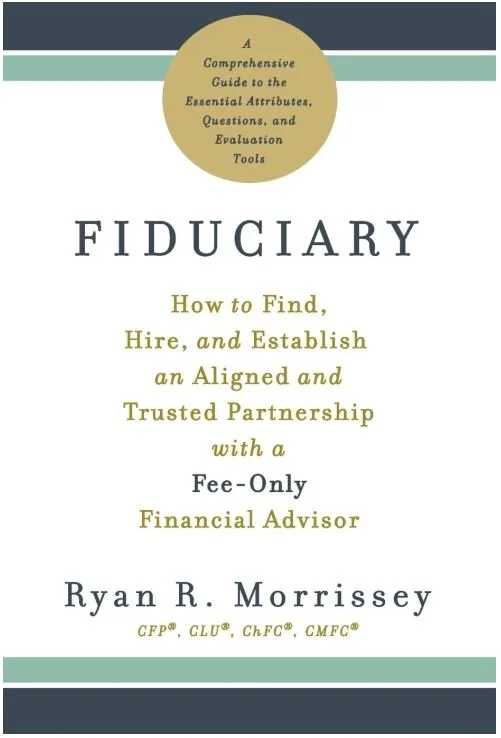How To Get More Retirement Income Using Retirement Guardrails with Matthew Jarvis
For this blog, I had the pleasure of sitting down with a good friend and financial planning powerhouse, Matthew Jarvis.
Matthew is a financial advisor based out of Seattle, WA, the head of Jarvis Financial, and the voice behind The Perfect RIA podcast. He’s also the author of Delivering Massive Value, a must-read for any advisor looking to up their game. Matthew and I have worked together quite a bit over the years, so it was great to reconnect and dig into one of the most crucial conversations around retirement: how to actually spend your hard-earned savings wisely.
The big question we tackled was this: once you’ve built up a solid nest egg, how do you convert that into retirement income without running out of money—or leaving so much behind that you didn’t really enjoy your retirement? It’s a tough balance. You want to make sure your money lasts as long as you do, but you also don’t want to be overly conservative and end up leaving behind what Matthew perfectly called a “mattress stuffed full of money.”
The 4% Rule
For those unfamiliar, the 4% rule is a common retirement income strategy where you withdraw 4% of your portfolio in the first year of retirement and adjust for inflation each year after. Years ago, advisors even used a 5% rule. So with a million-dollar nest egg, you’d expect to live off about $50,000 annually. Seems reasonable, right? But there’s a huge catch.
That method assumes market conditions are steady and predictable. And we all know that's not the case. What happens when markets skyrocket for a decade, like they did after 2010? You might underspend and miss out on living your best life. Flip side—what if you retire right before a crash, like in 2008? Continuing to draw that $50K a year could deplete your savings dangerously fast. Setting your income based on a single moment in time and never adjusting it again? That’s a risky move.
Retierment Income Guardrails
That’s where retirement income guardrails come in—one of the most practical and client-friendly approaches I’ve seen, and something I learned directly from Matthew. Guardrails are based on the idea that your retirement income should adjust dynamically. When markets are booming, you might increase your income a bit. When markets are down, you temporarily reduce it. Simple. Sensible. Sustainable.
Real Life Example
Matthew explained it like this: say you’ve got a million-dollar portfolio. Maybe your initial withdrawal rate gives you $50,000 a year. If markets take a hit and your portfolio dips close to $800,000 (your “lower guardrail”), that’s your cue to scale back—maybe to $45,000 or less—just for a bit. On the other hand, if your account grows past $1.2 million (your “upper guardrail”), that might be a good time to enjoy more income, like taking an extra trip or tackling that kitchen remodel.
It’s kind of like driving down a winding road. As long as you’re staying between the guardrails, you’re fine. A few bumps and curves are expected, and you don’t need to react every time the road shifts slightly. But if you hit the rumble strips—if your portfolio goes below or above your set range—then it’s time to course-correct.
This approach also helps when clients want to make one-time big purchases, like buying an RV or renovating a home. Rather than relying on a nebulous “82% probability of success” from some software (a stat that doesn’t offer much real-world comfort), guardrails let us evaluate whether that purchase is possible without jeopardizing long-term income. It brings clarity and confidence to financial decisions in retirement.
Important Factors To Consider
Now, this strategy isn’t for everyone. If your budget is so tight that you can’t handle even a small drop in income—say from $5,000 a month to $4,500—then guardrails may not be the right fit. Flexibility is key here. And being honest about what your lifestyle actually costs is just as important.
Sometimes, clients come in with big dreams and expectations that just don’t match the numbers. Matthew shared a story about a doctor who had $1 million saved and wanted to spend $250,000 a year. You don’t need to be a math whiz to know that doesn’t add up. It’s a hard conversation, but sometimes the only solution is to spend less, work longer, or accept a different retirement lifestyle. No amount of planning or investment wizardry can override the basic math.
That said, if you are willing to be flexible—tighten your belt in rough years and take advantage of the good ones—guardrails can give you much more income over the course of retirement than the overly conservative 3% or 4% rules. That could mean a few extra thousand dollars a month for you to enjoy while you're healthy and active. And let’s be real—that’s what most people want from retirement in the first place.
How to Monitor Your Guardrails?
Matthew recommends quarterly reviews. If everything is staying comfortably between the rails, great—no need to act. But if your portfolio is trending toward a guardrail, it's time to talk and plan. It’s proactive, not reactive. It gives people control without the panic.
One of the best parts about this approach is that it gives retirees the ability to act when markets fall—without panicking. Too often, clients are told to just “sit tight” during a downturn. But when your income is on the line, sitting still doesn’t feel good. Guardrails give you the plan and confidence to make smart adjustments.
What To Do When The Market Outperforms
Let’s say the opposite of a downturn happens—maybe the market’s been on a tear or you’ve been more frugal than expected. Suddenly, your portfolio is above the upper guardrail. In our earlier example, let’s say you’re now sitting above $1.2 million.
Surprisingly, this is often a harder situation psychologically than cutting back. If we tell a retiree, “Hey, markets are down, we need to cut your income by a few hundred bucks for now,” most people get that. It’s intuitive. “Don’t spend more than you have”—you’ve been saving your whole life with that in mind.
But when the markets do really well, and you're technically "ahead of plan," it messes with our heads. We’ve seen clients hesitate to do anything with the extra money. And honestly, that’s a problem too.
Avoiding the Mattress Full of Money
The point of the guardrails approach isn’t to end your life with a mattress full of money you never touched.
If you’re ahead, it’s time to enjoy the success:
Take that trip around the world.
Buy the RV.
Gift money to your kids or favorite charity.
Fly first class instead of coach.
You’ve earned it. And here’s the key—you’re still in control. The plan isn’t a free-for-all. But it is a permission slip to use your wealth with purpose.
You're the Youngest You're Ever Gonna Be
This may be a bit of a reality check—but it’s an important one: You’re the youngest and healthiest today that you’re ever going to be. Unless you’ve got a temporary health issue, odds are you’re not getting healthier from here on out.
Retirement often plays out in three phases:
The Go-Go Years – travel, adventure, bucket list.
The Slow-Go Years – health starts limiting mobility a bit.
The No-Go Years – homebound, healthcare becomes the priority.
Don’t wait for phase two or three to start enjoying your wealth.
Guardrails Need More Than Good Intentions
Here’s the truth: sticking to a strategy—especially during emotional times—is hard. Just like driving on a mountain road in the dark without guardrails or rumble strips is dangerous, so is managing retirement spending without a system.
And that’s where working with a trusted advisor (yes, shameless plug) becomes crucial. Not just for the technical side—though that’s part of it—but for the psychological support that keeps you from panicking when the market dips or making risky moves when it soars.
There’s more complexity here than we sometimes explain. Taxes, interest rates, how we actually deliver monthly income, how much cash we keep on hand... it all plays a role. But we try to keep the language simple, so the strategy stays approachable.
One of the Biggest Mistakes: Not Having a War Chest
Let’s say you’re pulling $1,000/month from your portfolio. Some retirees just sell $1,000 worth of investments each month to get that income. And that’s fine—until the market drops.
Because if your investments are down, you have to sell more shares to get the same $1,000. And when markets eventually rebound, you’ve got fewer shares left to grow. That’s the danger of reverse dollar-cost averaging.
We saw this in 2008. And again in 2022.
That’s why we recommend what we call a five-year war chest—money that’s fully protected from market volatility.
Here’s how we usually set it up:
1 year’s worth of income in a money market or high-yield savings.
4 years in short-term bonds, CDs, or other stable options.
Yes, when markets are up, it feels silly to have that much “on the sidelines.” But when markets are down? It’s a lifesaver.
You Can Tailor the War Chest to Fit You
If you’ve got other income sources (like rental properties or a pension), or your fixed expenses are super low, maybe you can get by with a smaller war chest—say, 3 or 4 years.
Conversely, if you’re conservative or just sleep better knowing you’re covered, maybe you stretch it to 6 or 7 years. The point is: there is a system. Don’t try to outsmart it. It works for a reason.
A Quick History Lesson: Worst Time to Retire
When people think about market risk in retirement, they usually point to the Great Depression. But believe it or not, the worst time to retire was actually 1973.
The market dropped 50%.
Inflation skyrocketed.
It took 15 years for the market to fully recover (adjusted for inflation).
This is exactly the kind of environment the guardrails system was designed to withstand. It’s not perfect. Nothing is. But it’s resilient.
If You Hate Market Volatility, This May Not Be for You
Let’s be real. If you can’t sleep at night during market drops—if you’d rather have less upside and more predictability—then a guardrails strategy might not be the best fit.
That’s when we look at insurance-based products, like annuities. But those come at a cost. Nothing is free—least of all the guarantees that insurance companies offer.
(And by the way, there’s a reason their names are on football stadiums.)
If you have a question or topic that you’d like to have considered for a future episode/blog post, you can request it by going to www.retirewithryan.com and clicking on ask a question.
As always, have a great day, a better week, and I look forward to talking with you on the next blog post, podcast, YouTube video, or wherever we have the pleasure of connecting!
Written by Ryan Morrissey
Founder & CEO of Morrissey Wealth Management
Host of the Retire with Ryan Podcast






